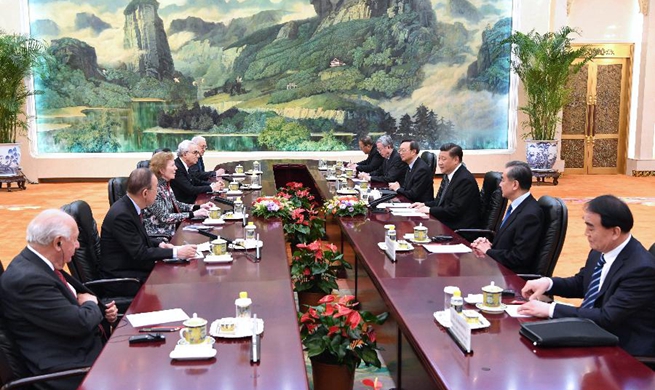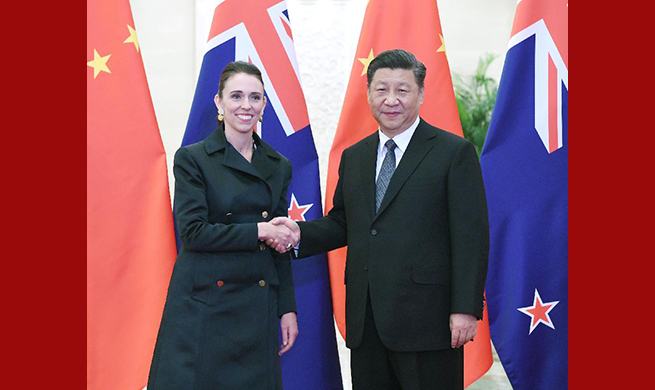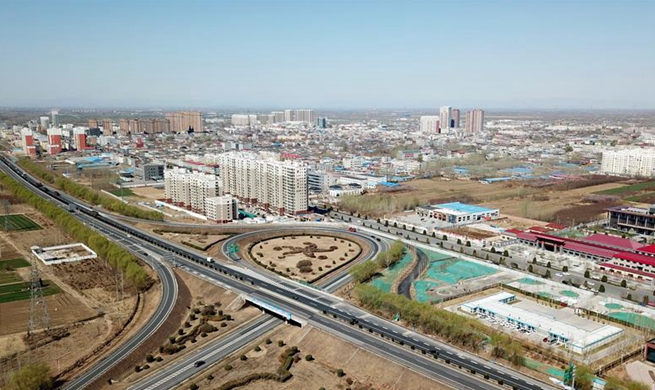MANILA, April 3 (Xinhua) -- Growth remains strong across most of developing Asia but is set to moderate this year and next year against the backdrop of slowing global demand, among other reasons, according to a new Asian Development Bank (ADB) report released on Wednesday.
The latest Asian Development Outlook (ADO) 2019, ADB's flagship economic publication, forecasts that growth in the region will soften to 5.7 percent in 2019 and 5.6 percent in 2020. Developing Asia's growth in 2018 was 5.9 percent.
Excluding the newly industrialized economies of South Korea, Singapore, China's Hong Kong and China's Taipei, developing Asia is forecast to expand 6.2 percent in 2019 and a slightly slower 6.1 percent in 2020. In 2018, growth was 6.4 percent.
"Growth overall remains solid with domestic consumption strong or expanding in most economies around the region. This is softening the impact of slowing exports," ADB chief economist Yasuyuki Sawada said. "Uncertainty clouding the outlook remains elevated," he said.
ADB forecasts slower combined growth in the United States, the European Union (EU), and Japanese economies of 1.9 percent this year and 1.6 percent in 2020 given tighter fiscal and monetary conditions in the United States, the prospects of a disorderly Britain exit from the EU, and other reasons.
China will likely see economic growth moderate to 6.3 percent in 2019 and 6.1 percent in 2020 from 6.6 percent in 2018. Slower growth is to be expected as China's economy matures.
By contrast, the report says stronger consumption will see growth in India tick up from 7.0 percent in 2018 to 7.2 percent in 2019 and 7.3 percent in 2020 with lower policy interest rates and income support to farmers boosting domestic demand. South Asia overall will outperform other subregions and is forecast to expand 6.8 percent this year and 6.9 percent next year.
Growth will also rebound in the Pacific from 0.9 percent in 2018 to 3.5 percent in 2019 as liquefied natural gas production in Papua New Guinea, the subregion's largest economy, returns to full capacity following an earthquake in 2018. Growth is expected to be 3.2 percent in 2020.
Lower oil prices, alongside slower growth in Russia, will weigh on economies in Central Asia. Growth in the subregion is forecast to slow to 4.2 percent for this year and in 2020.
Inflation remains low. Stable food and fuel prices mean headline inflation will be steady at 2.5 percent in both 2019 and 2020, the report said.
While Asia's emerging market currencies improved somewhat in late 2018, research prepared for the ADO said that exchange rate volatility can be problematic, particularly for countries that rely on U.S. dollar-denominated debt.
"Suitable monetary and macroprudential policies, regional policy dialogue, and deeper domestic capital markets can mitigate the impact from tighter external funding conditions," the report said.












